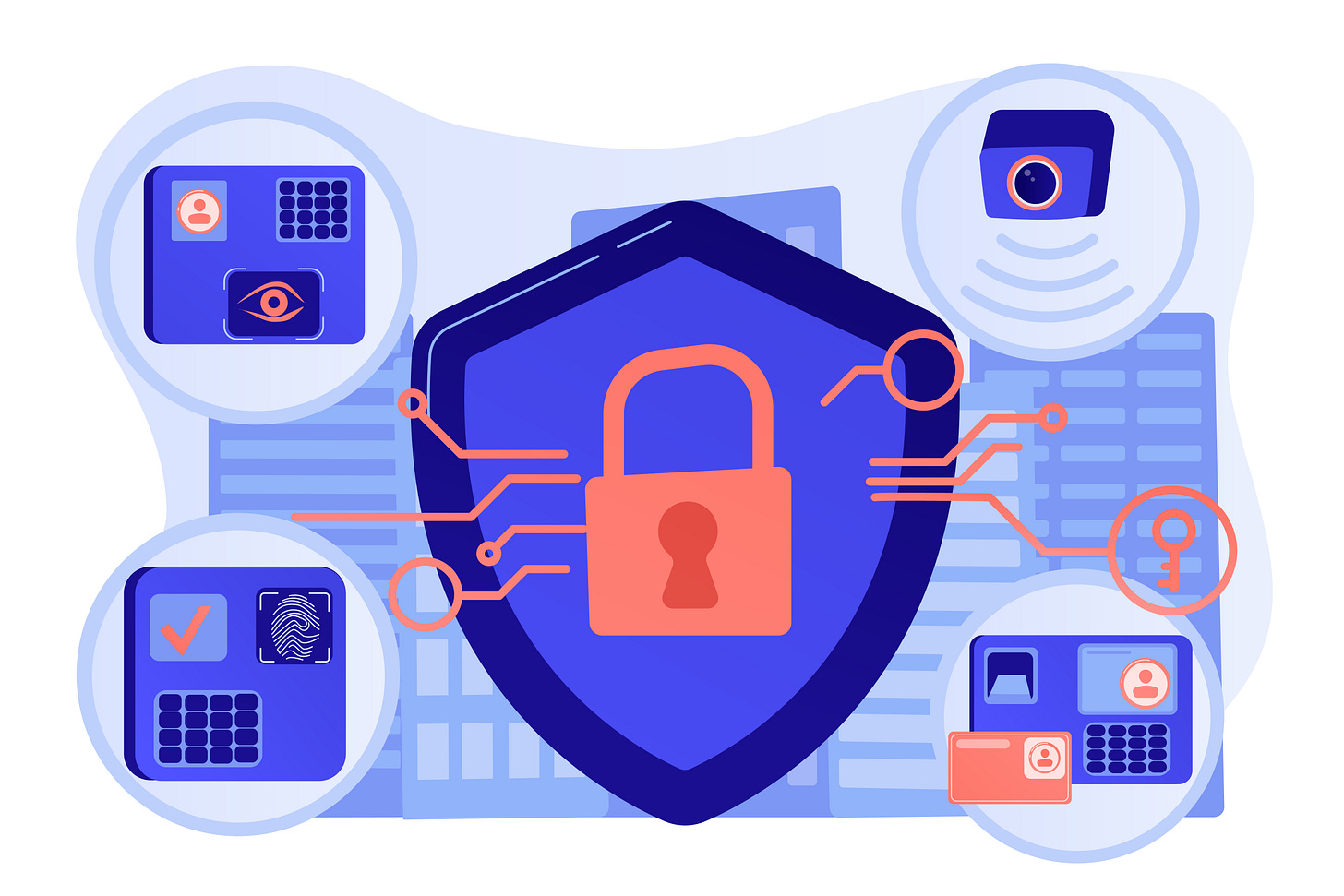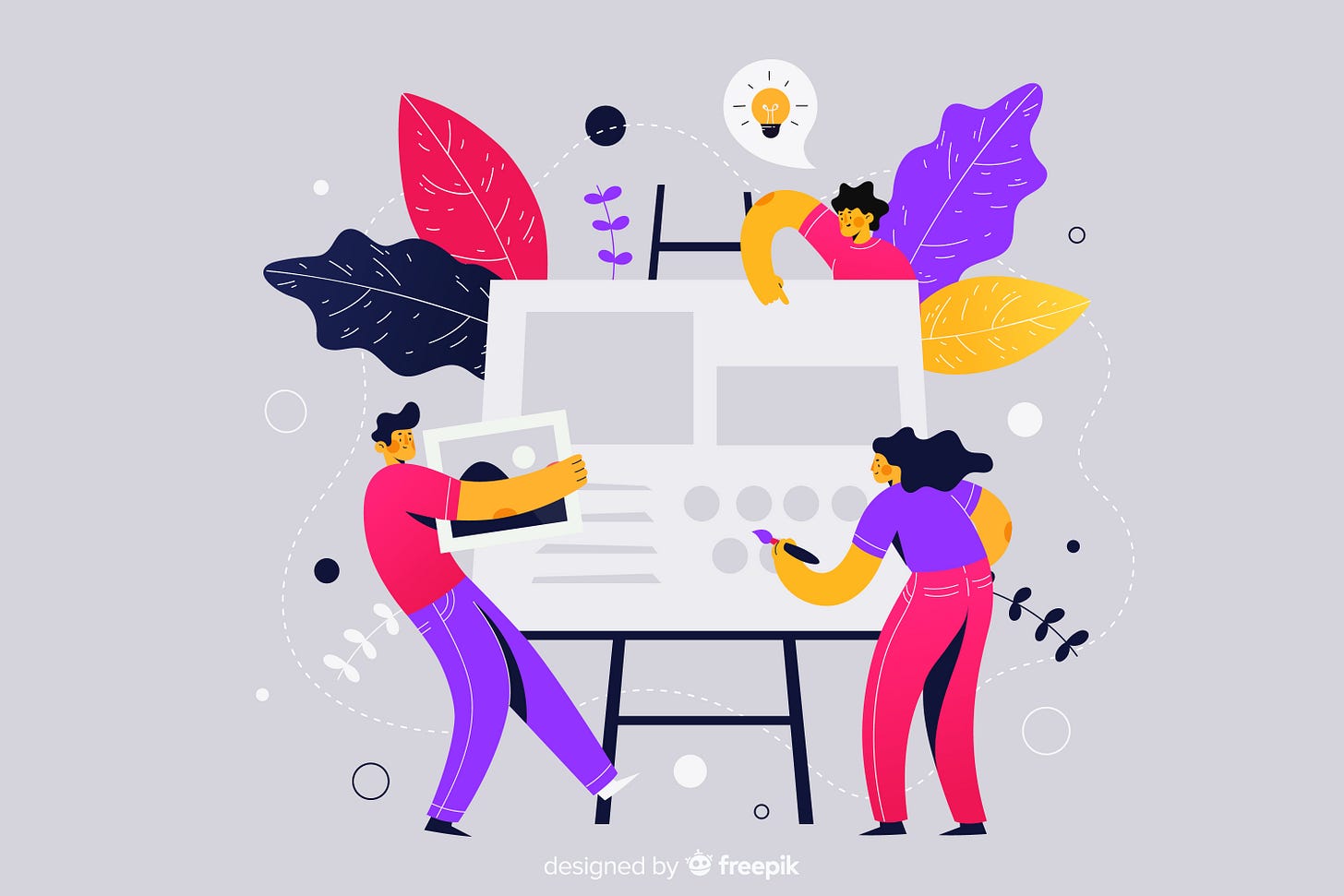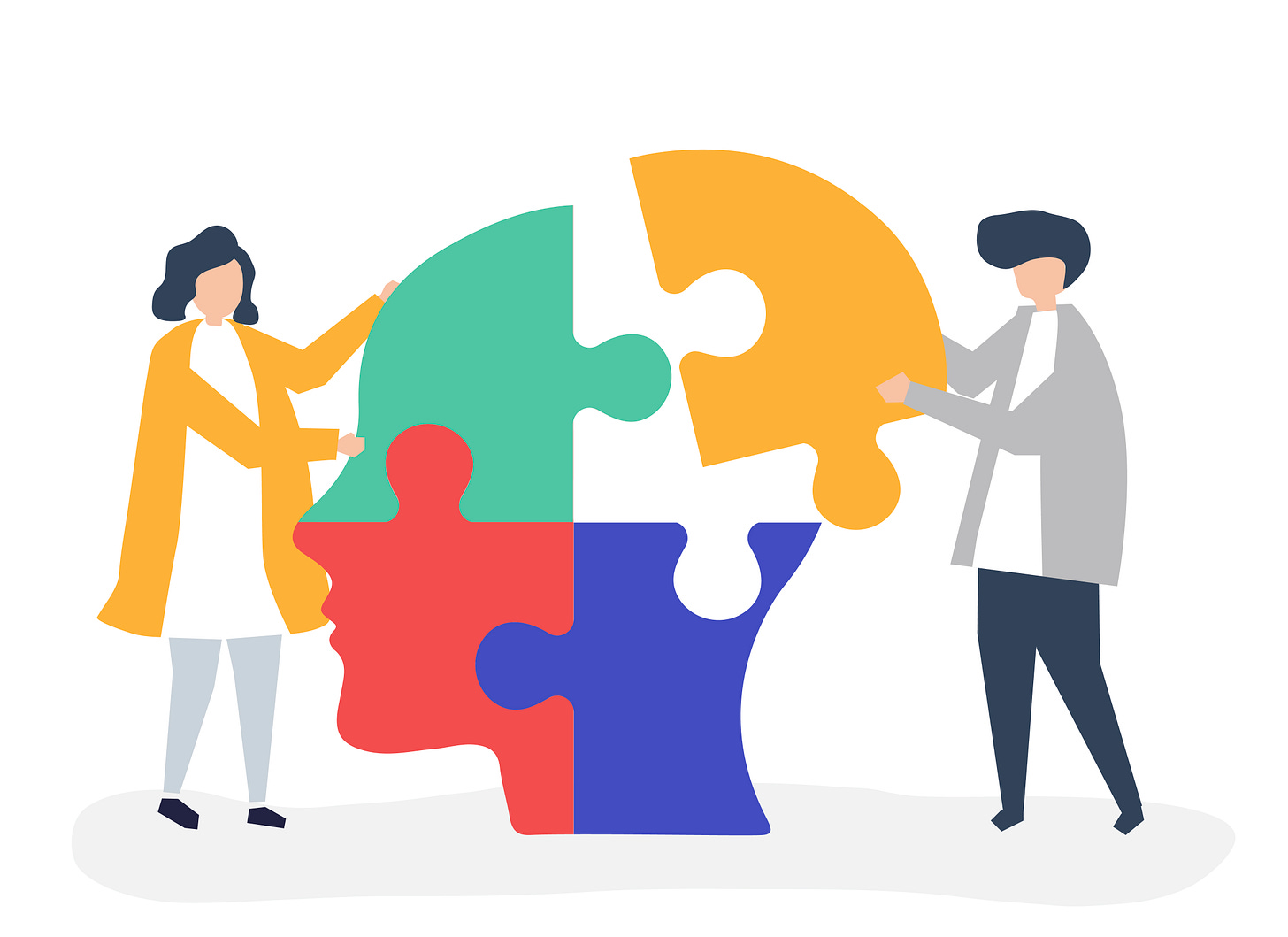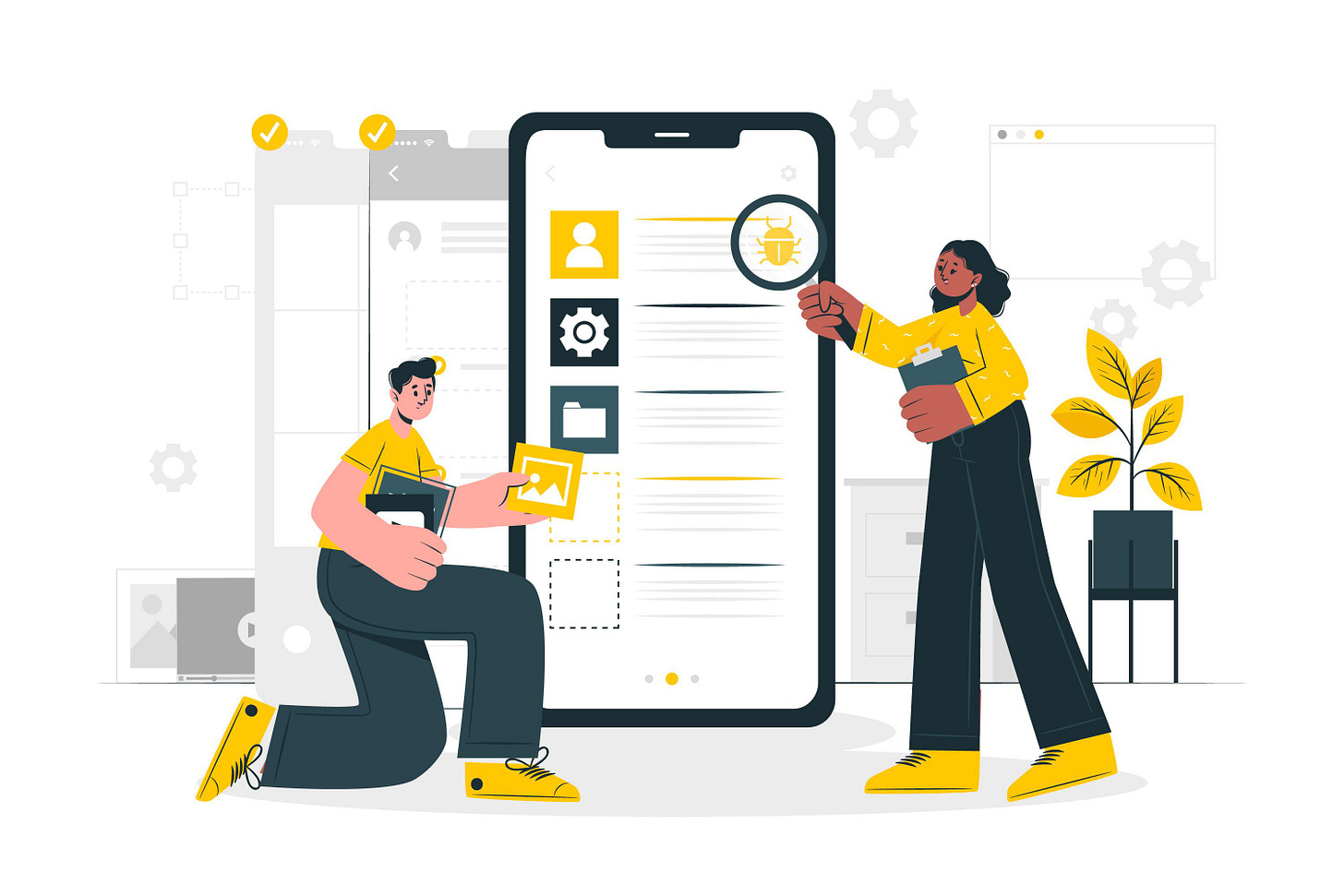Hello, and welcome to another step closer to being a world-class product designer!
How did your week go, and what’s your Friday night plan? For me, I guess I’ll have to beat a few more people in FIFA, teach them a lesson, you know?😂😂
Anyways, hope you learned a thing or two from our last newsletter, and I’m also hoping you took a shot at the job openings as well. As you keep trying, one of these days, it’s going to click. So don’t get tired yet, it’s a matter of time AND consistency.
Okay, enough with the motivational speech, and let’s get right into today’s business abeg😂
In today's world, designing isn’t just something you do and get up. Creating experiences that include everyone is the key to a successful design. That's why mastering accessibility guidelines and best practices is crucial for product designers. In this edition, we will explore five essential accessibility guidelines and best practices to help you excel in your next product design gig. So, buckle up, and let’s do it!
Embrace Diverse Perspectives
To create inclusive products, it's crucial to recognize and embrace the diverse backgrounds, abilities, and experiences of users. Here are some ways you can effect this:
Recognize and Respect Differences: Understand and respect the diversity that exists among your target audience. This includes considering factors such as language, socioeconomic status, education level, and cultural norms.
User Research with Individuals with Disabilities: By engaging with this user group, you can gain valuable insights into their unique needs, challenges, and preferences. Understand the barriers they face and the assistive technologies they use to inform your design decisions.
Cultural Sensitivity and Inclusivity: Conduct user research and collaborate with individuals from different cultural backgrounds to gain a deeper understanding of their perspectives. This will help you create designs that are respectful, inclusive, and relevant to diverse audiences.
Age Considerations: Take into account varying age groups among your target users. Design for different levels of technological proficiency and cognitive abilities. Consider the preferences and limitations of both younger and older users to create a seamless and inclusive user experience.
Prioritize Accessibility
To prioritize accessibility throughout the design process, consider the following practices.
Follow Accessibility Guidelines: Adhere to established accessibility guidelines, such as the Web Content Accessibility Guidelines (WCAG), to ensure that your product meets the needs of individuals with disabilities.
Keyboard Accessibility: Design your product so it can be fully operated using a keyboard. This allows users who cannot use a mouse or touch input, such as those with motor disabilities, to navigate and interact with your product effectively.
Color Contrast: Ensure there is sufficient contrast between text and background elements to make content readable for users with visual impairments or color deficiencies. High contrast enhances legibility and ensures that information is accessible to all users.
Text Alternatives: Provide alternative text for non-text content, such as images, videos, and audio files. This allows users who rely on screen readers or other assistive technologies to access the information conveyed by these elements.
Screen Reader Navigation: Optimize your product's design and structure to enable smooth navigation for users who rely on screen readers. Properly labeled headings, lists, and form elements help screen reader users understand the organization and functionality of the content.
Design for Flexibility
To create amazing products, it's important to design with flexibility in mind. Consider the following practices:
Customization Options: Give users the ability to personalize their experience. Let them adjust the font size, color themes, and layout to suit their preferences and accessibility needs.
Font Size and Readability: Design your product to accommodate different font sizes. Ensure that the content remains readable and maintains its structure and functionality when the font size is increased. This helps users with visual impairments or those who prefer larger text.
Color Themes: Provide different color themes or modes to accommodate users with specific visual preferences or color sensitivities. Options like high contrast or dark mode can improve readability and reduce eye strain for certain users.
Layout Adaptability: Create layouts that can adjust to different screen sizes and orientations. This allows users to access your product on various devices without compromising usability or content visibility.
Accessibility Settings: Include dedicated accessibility settings that users can activate. These settings may include screen reader compatibility, keyboard shortcuts, or alternative input methods. This ensures that users with disabilities can navigate and interact with your product effectively.
Consider Cognitive Diversity
When designing your product, it's important to think about users with different thinking abilities. Here are some tips to make your design more accessible:
Use Clear and Simple Language: Use words and phrases that are easy to understand. Avoid complicated technical terms and explain things in a straightforward way.
Keep it Simple: Make your design simple and easy to follow. Reduce distractions and unnecessary elements that can confuse users. Focus on presenting the most important information clearly, so users can stay focused on their tasks.
Provide Clear Instructions: Make sure your instructions are easy to follow. Break down tasks into simple steps and use visual cues to guide users. Keep your explanations short and to the point.
Make Navigation Easy: Design your product in a way that makes it easy to find and move around. Use clear labels, headings, and visual cues to help users understand where they are and how to get where they want to go.
Test and Improve: Test your design with users who have different thinking abilities. Listen to their feedback and make changes to improve clarity and understanding.
Usability Testing with Diverse Users:
To create a more inclusive user experience, conduct usability testing with diverse user groups. This involves gathering feedback from individuals with different abilities, backgrounds, and perspectives. By involving a range of users, you can:
Uncover Issues: Diverse users may encounter unique challenges or barriers when interacting with your product. Usability testing helps identify these issues, allowing you to address them and improve accessibility.
Understand User Needs: By involving users with different abilities, you gain insights into their specific needs and requirements. This understanding allows you to tailor your design to better accommodate their preferences and enhance usability.
Make Informed Design Decisions: Usability testing with diverse users provides valuable feedback that informs your design decisions. It helps you prioritize accessibility features and make necessary adjustments to improve the overall user experience.
Enhance Inclusivity: By actively involving users with different abilities, you demonstrate a commitment to inclusivity. This approach ensures that your product caters to a wider range of users, promoting equal access and usability for all.
Remember, accessibility is not just a buzzword; it's a fundamental aspect of design that promotes inclusivity and ensures equal access to information and services. By mastering these accessibility guidelines and best practices, you'll be well-equipped to create designs that are not only visually stunning but also accessible to all users, regardless of their abilities.
Now, the best part!
Who else is excited to apply for open design roles? Let’s get to it.
UI/UX Designer & Gaming Enthusiast @ Fluyo
Essential Skills Required
3+ years of UX experience, high-level proficiency with Adobe XD / Figma, and an elegant & modern portfolio
Experience in game design or extensive gaming experience (the majority of Fluyo is either a game or very gamified, we need someone who is familiar with common gaming mechanics)
Your files, components, prototypes, and designs are highly organized
You love learning new languages and have used various language-learning apps
You love talking to customers/users to get product feedback and can turn this feedback into designs.
Want to know more about this job? Click HERE
UI/UX Experienced Designer @ SunRay Construction Solutions
Skills Required:
Experience in designing complex software systems or enterprise-level applications.
Knowledge of HTML, CSS, and front-end development principles to collaborate effectively with developers.
Experience with usability testing and conducting user research.
Interest in this job? Apply HERE
That will be all for today. Don’t forget to master the guidelines above before your next gig, and write me back if there’s something you’d love to add (I’d really love that😉).
In the meantime, stay world-class 🚀











Amazing tip right there chief.